Rini, our youngest of six children, was adopted in August of 2013 at end stage heart failure stemming from complex, single ventricle congenital heart disease. She was admitted to the hospital immediately upon arrival home and within two weeks it was determined that she was inoperable, her only hope would come through cardiac transplant. She was initially found to be ineligible, but that would change thanks to a heart failure/transplant program that chose to take a chance on hope and optimism.
Much as we owe her life to the sacrifice made by her birth family in letting her go, we also owe it to the incredible, selfless act of organ donation made by a family in the midst of the incomprehensible loss of their child.
This series is a retrospective of the weeks leading up to Rini’s transplant which took place on November 13, 2013, and it is my hope that it will help to bring awareness to the importance of registering to be an organ and tissue donor.
We all have the power to be someone else’s miracle.
Donate Life!
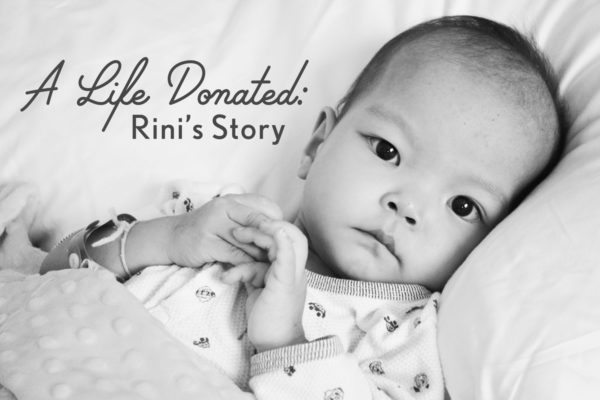
From October 15th, 2016
On this day three years ago, I was so uneasy. I was scheduled to switch places with Eric the next day but I felt compelled to stay with Rini. The idea of leaving her filled me with dread and panic. Our other children were missing me greatly and our teenage daughter was particularly struggling. I was torn in two. I just felt like I could not step out of that hospital. I couldn’t leave Rini. Something was right there, hovering right outside the door. My anxiety was through the roof.
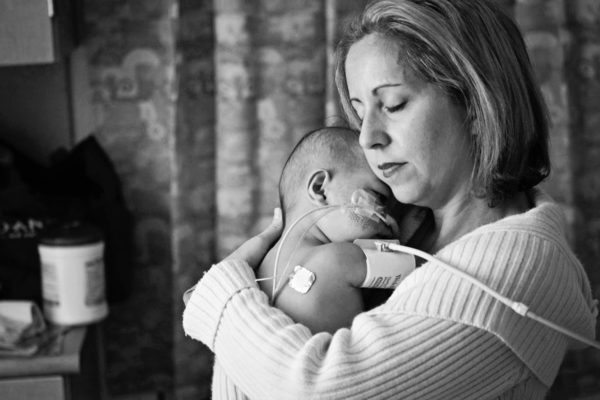
From my journal:
“Today has been a challenging one. Frankly, it’s been an emotionally terrible day. Today I started to crack. Rini had an awful night, struggling to breathe, restless, hitting me and crying when I tried to comfort her. Her doctors and nurses know her well enough by this point to spot when something is off. Her cough continued and she had four episodes of vomiting, she refused to sit up and wanted me to lay her back down after only being held for a couple of minutes. She did have a few moments where she would play but for the most part she slept all day.
After visiting with friends this morning (thank you all!), bidding farewell to my parents who stopped by on their way to PDX, and saying goodbye to my friend whose daughter was discharged today post-Fontan, we noticed a considerable decline in Rini’s spirits and an increase in her work of breathing. Her cardiac nurses expressed their feelings that it was time to add support, and they paged the cardiology team. Rini fell asleep so I went to the cafeteria and grabbed some soup and headed back towards Rini’s room. I could feel the tears welling up so I stopped in the thoroughfare between the two hospitals and sat down. Two of our cardiologists walked up to me and asked how things were going, and I began to cry. I looked up and one of them had tears in his eyes.
I thank God for the compassionate team surrounding us. The other physician listened to my concerns and she said, “Okay, that’s it. We will head in there right now. The time has come for more support.” Less than two hours later, Rini was admitted back into the PICU to begin Milrinone.
Before we were moved, one of our cardiac nurses came in and told me that they wanted me to call Eric and discuss our resuscitation wishes. Eric and I had already discussed this several times between the two of us over the past weeks, but we did so again. Once I arrived in the PICU with Rini and she was settled and her IV placed, four of our cardiologists came in and we had the talk.
Once again, I thank God for our compassionate team. Four years, three complex cardiac kids of ours in their care prior to Rini, and this is the first time we’ve had to broach this topic. Afterwards, I sat and held Rini’s hand until she fell asleep, and then I started to walk out to make phone calls and get a meal for myself. Our critical care cardiologist, “Dr. Amy”, stopped me and told me that she had called and spoken with the transplant team nurses at Seattle Children’s so that everyone would be on the same page as far as the care being given to Rini in the PICU as we wait to find out if she will indeed be transferred there. They are in full agreement with the current course of treatment, and tomorrow morning she will be speaking with Seattle’s transplant surgeons.”
I reconciled myself to leaving for home after Eric arrived the following morning, and I stayed up late into the night and sat next to my beautiful child’s crib and watched her sleep.
From October 16, 2016
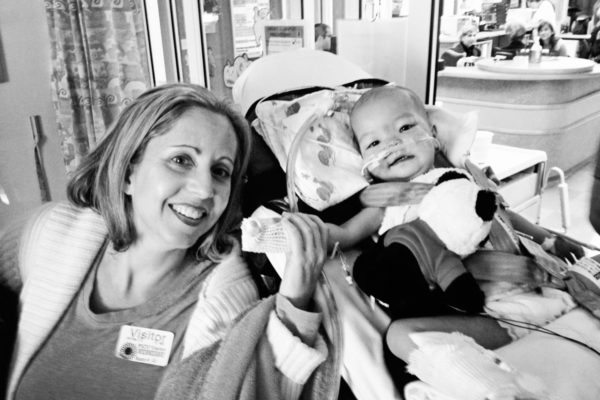
Where do I even start? On this day three years ago, hope won!
I don’t remember anything about the early morning. From my journal, I know that the day began with Rini’s ICU team notifying me that the Milrinone had had no discernible effect, that Rini’s kidneys were beginning to fail, and that she had “worsening, very advanced heart failure.” I don’t even remember Dr. Amy coming up to me and telling me that Rini’s 5AM labs showed that her pre-albumin level had reached 19.
I can’t recall her telling me that she had been on the phone multiple times that morning with Seattle Children’s heart failure/transplant team culminating in a 10AM conference call with the transplant surgeons. And I don’t have any memory of the moment that I was told to prepare to depart with Rini for Seattle via Life Flight in roughly 2-4 hours.
My earliest memory of that day is standing in the hallway outside of the PICU, frantically calling Eric who was on his way to the hospital. He and I engaged in an emotional discussion regarding which of us would accompany Rini north, with me stubbornly refusing to budge. Although he was a bit upset with me for refusing to entertain the idea of being the parent to stay behind, he has since told me that he believes it was for the best that I went with Rini. On that day, I just felt in my gut that my disposition would be better suited for what was about to come, even though I had no concept of what that was.
Our children were so disappointed (and in one case, angry) that I wouldn’t be coming home as planned. I remember the intense stress of trying to juggle all that was happening while trying to placate the emotions of our children.
And in the midst of this, I was contemplating the best way to support my 23 month old baby, whose native language I didn’t speak and who was frightened, in pain, and dying.
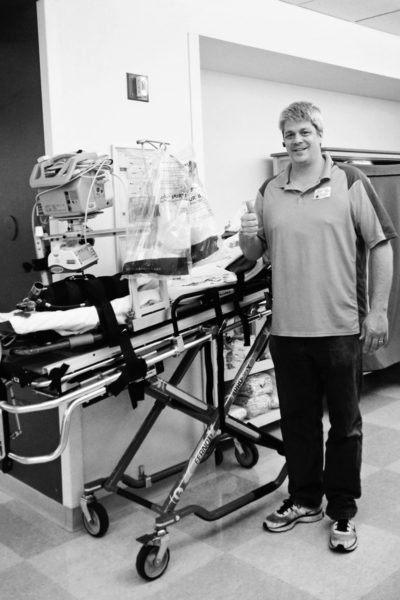
After I ended my phone calls, I stood and cried. Standing not far from me was a gentleman who was also standing and crying. In the hallway outside of a pediatric ICU, strangers become friends in an instant. He explained that his daughter-in-law was in the PICU at end stage Cystic Fibrosis, waiting to hear if she would be transported to Stanford to be listed for a double lung transplant.
As some of you know, Rini Ann is named after my friend, Ana, who had passed away one month after we adopted Rini. Ana had undergone a double lung transplant at Stanford after a life long battle with Cystic Fibrosis, but had succumbed to cancer over a decade later. Was this meeting happenstance? I think not.
Eric arrived shortly thereafter, and (from my journal):
“The early afternoon was a whirlwind! Our surgeon, Dr. Langley, came in twice to visit with us and assured us that Rini would receive excellent care at Seattle Children’s, and that he would be calling ahead to Dr. McMullen who is one of the transplant surgeons and a personal friend of his. Many of Rini’s doctors came in to express their good wishes and bid us farewell, and the Panda Team (Critical Care Transport) arrived to start a second IV and get her ready to go.
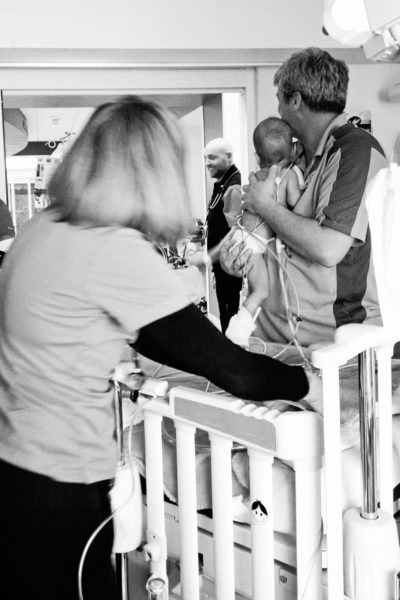
As we were getting ready and I watched as everyone worked together on behalf of our little girl, I felt such a feeling of gratitude for all that we have in this country. The little girl who wasn’t fed in the PICU in China was now the recipient of so much concern and love. Even the news that our insurance company is refusing to cover the cost of her medical transport couldn’t dampen our spirits. Seriously, it didn’t! If it takes forever to pay it off, so be it! We will fight it, of course, but honestly we just shook our heads and laughed. They said that they will cover it only if she actually receives the transplant, because then it will have been a “medically necessary” transport. But as it stands now, they consider this just a transplant evaluation.
After Rini was safely placed on the transport cot and strapped in, she received quite a send off from the PICU staff. There were hugs, cheers, and applause as she was wheeled towards the exit! As soon as we got outside, Rini looked up, pointed to the sky, and smiled.
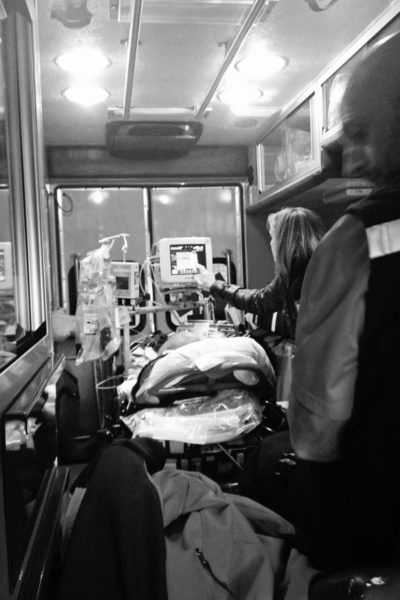
My head is spinning and tomorrow I hope to be able to articulate some of the emotions of this day. Despite what tomorrow may bring, at this moment I am feeling hopeful and excited for Rini and we’ll take tomorrow as it comes.”
We were so happy, so relieved, so filled with hope! But one of the most challenging tasks I’ve been given during my counseling sessions over the past two years is to give voice to my pain. As it was occurring, I viewed the acknowledgement of it as almost blasphemous. After all, my daughter was alive, my daughter still had a chance. We were fortunate. Oh so fortunate! It could always be worse.
And in my attempt to be thankful each and every day for its blessings, I did not permit myself to concede to its difficulties.
I promised myself when I decided to write this retrospective that I would take a deep breath and validate the pain, the trauma, and ultimately embrace the yin and yang.
“In Chinese philosophy, yin and yang describe how seemingly opposite or contrary forces may actually be complementary, interconnected, and interdependent in the natural world, and how they may give rise to each other as they interrelate to one another.”
I am so glad we had that day of unbridled joy, because the next week would be among the hardest, most gruelingly unhappy of our lives. We would be thrust into a world in which strangers make decisions regarding the life and death of someone else’s child, and rules and regulations based upon the scarcity of a precious resource govern who is given a chance at life and who is sentenced to death.
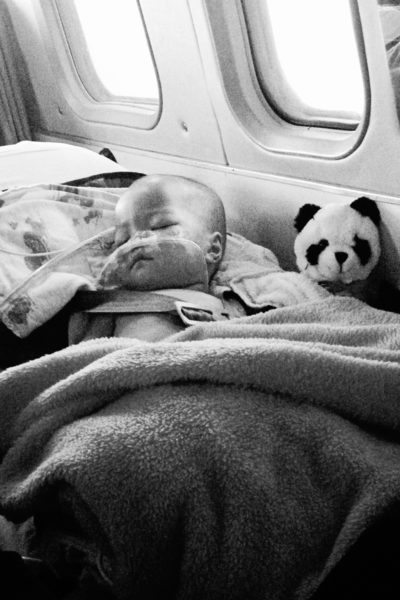
From October 17th, 2016
On this day three years ago, the elation of the previous day’s transfer to Seattle Children’s had morphed into primal fear.
After we arrived at Boeing Field, we were taken by ambulance to the hospital where we were whisked into the brand new Cardiac ICU that had just been completely rebuilt six months prior. Waiting for us was Dr. McMullen, one of the transplant surgeons who had been working with our home hospital on the transfer. I appreciated the warm welcome, and it made me feel a bit less alone in a hospital (and city) where I knew no one. I had never been in a CICU (cardiac intensive care unit) before, only a PICU (pediatric intensive care unit), and my mind would be blown over the next days and weeks.
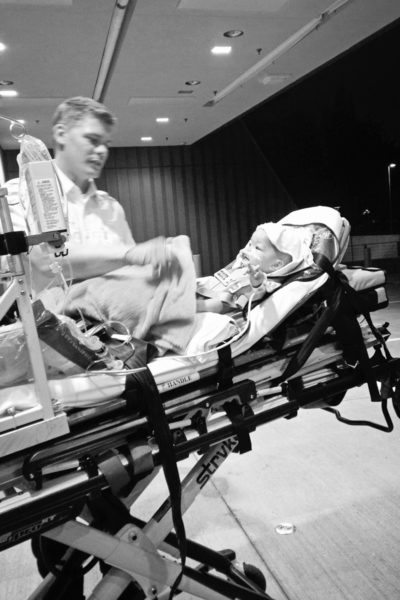
Rini’s nurse began a thorough history and Rini’s first ever echocardiogram at what would become her home hospital took place. I can say with certainty that Rini began winning hearts that very first night, just as she had won mine ten months earlier when I first saw her on Holt International’s photo listing and had been asked to be her advocate.
On the morning of the 17th, I attended my first rounds at the hospital and it’s an experience I will never forget. I want to make clear that we came to love each and every person in that CICU who was part of Rini’s care and continues to be. But that first week, the only love I had was for her nurses. I learned very quickly, just five minutes or so into rounds, that transplant evaluation is a very sterile process.
It was that morning that I met the first of the Heart Failure/Transplant Cardiologists. What unnerved me immediately was that they rounded in front of her room, but off to the side where Rini could not be seen. I desperately wanted to say, “Hey! Look at my child! She’s right there!”
The fact was, Rini was no longer special or unique. We were unknown, without any connections. Here, we weren’t “the family with four cardiac children from China”. I realized with a sick feeling that here she was just another complex cardiac patient dying of heart failure.
That is why, later that day, I taped the photos of Rini and our family that I had brought with me to the glass doors of her room, as well as right underneath her room number and name. I wanted each and every professional in that CICU to see her as an individual, a child who had a family that loved her and who would fight for her.
During rounds, the cardiologist was going through her history and anatomical anomalies and mentioned her severely hypoplastic left pulmonary artery and dimunitive, non functioning left lung, as well as her significantly enlarged right pulmonary artery and lung that had sustained damage from excessive blood flow. A Cardiac Fellow, who later became one of my favorite people because he could always make me laugh, blurted out, “And how exactly is THAT going to work with transplant?!” The cardiologist shot him a “be quiet” look. In that instant, I felt a sick, disgusting, terror-filled wave rise up from my gut into my throat, I began to feel lightheaded and began to sweat.
Oh dear God, I thought. This isn’t just about malnutrition.
I flashed back to the day before as Rini was being readied for transport when Dr. Amy pulled me aside and said, “I just want to be clear that even though she’s going to Seattle, she may not get listed for transplant. There is a chance they won’t list her.” I had completely blocked that conversation out until the comment made during rounds.
I was completely, utterly shaken. What had I been thinking? All this time I had been so focused on her metabolic status. How had I missed this? Had it not been communicated to me? Had I failed to ask the right questions? It was all of it.
Looking back though, I think it was for the best. How much worry can one soul bear?
During rounds that day, I learned that in an excellent CICU, there is an entire team solely dedicated to children with congenital heart disease, cardiomyopathy, and other cardiac diseases. Not Pediatric Intensivists, but Pediatric Cardiac Intensivists. Not Pediatric ICU Nurses, but Pediatric Cardiac ICU nurses. Not Residents, but Cardiac Fellows. There are the general Pediatric Cardiologists, as well as an additional team of Pediatric Cardiac Heart Failure and Transplant Cardiologists in centers that have a transplant program. There are Pharmacists to serve the needs of the CICU, as well as Nutritionists who job it is to manage the needs of the CICU patients. There are Transplant Nurses and Transplant Coordinators, and of course, the Surgeons. It’s an entire world solely devoted to the some of the sickest and most vulnerable cardiac patients. Total specialization.
Having my eyes opened in this way, particularly after witnessing a CICU at work on the sickest of the sick, is one reason that I am now such a proponent of CHD children being treated in experienced CICUs.
Later that day, I would take my first trip to the “Quiet Room”, aka The-Heavy-or-Bad-or-Sad-News-Room at the end of the hall with another of the Heart Failure Cardiologists. She went over in great detail what to expect over the next several days, including meetings with: Transplant Cardiologists, Transplant Coordinators, Transplant Surgeons, Social Workers, Anesthesiologists, Infectious Disease Specialists, Dieticians, Developmental Specialists, and Psychologists.
The testing Rini would undergo would include: PRA Antibody testing, Virology testing, chemistry testing, echocardiograms, electrocardiogram, chest x-ray, cardiac catheterization, cardiac MRI, and others.
I was told that if Rini were to be listed, she would most likely be listed at UNOS (United Network of Organ Sharing) Status 1A, the most critical status. The current average wait time for a heart in the U.S. at that status was 3-5 months. I remember being somewhat concerned about that, but not nearly as concerned as I should have been. However, that reality would present itself soon enough.
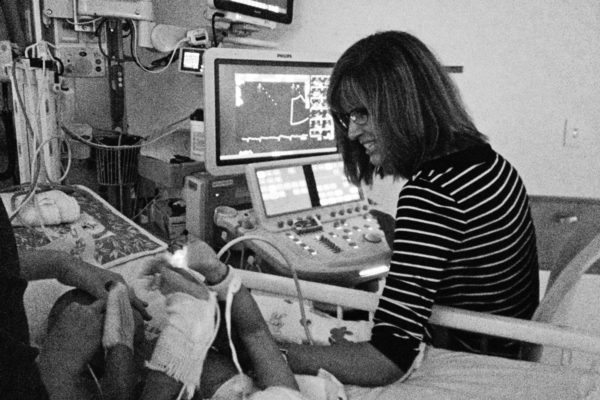


























Leave a Reply